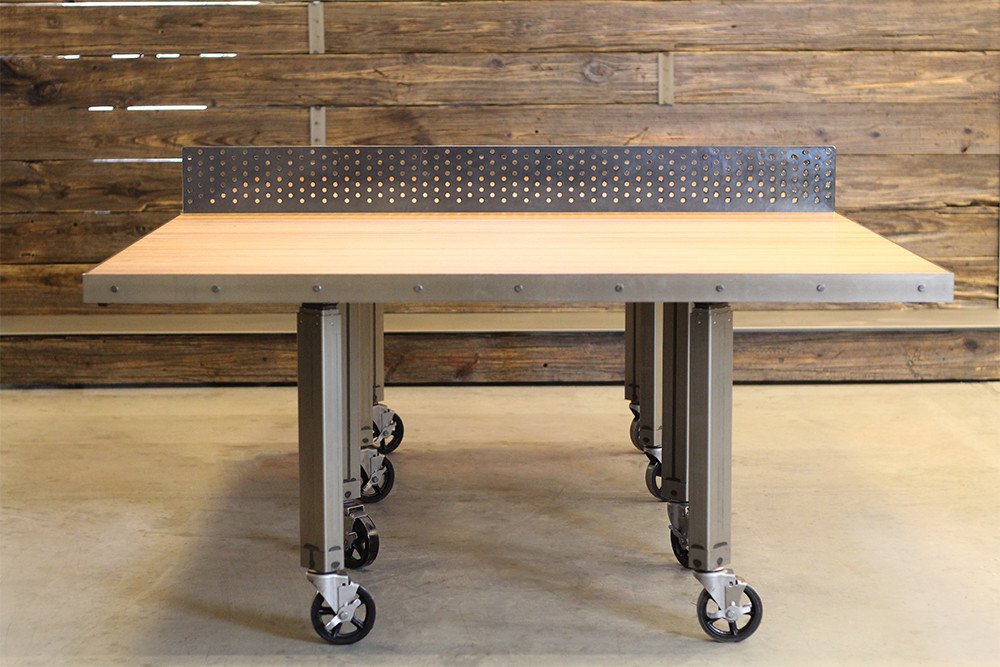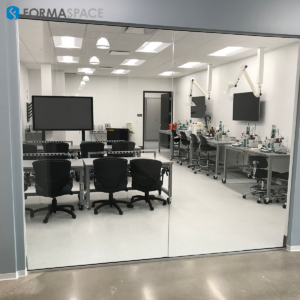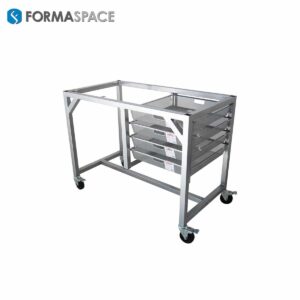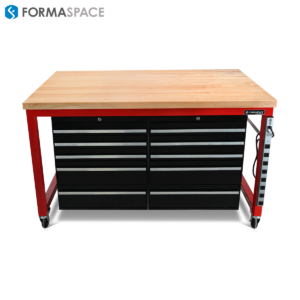With today’s high employment rates, companies are finding that attracting talent is one of their biggest challenges. Offering higher salaries than the competition may not be the only option for attracting talent. Instead, many leading companies are changing their office design and improving workplace engagement to attract and retain their top employees.
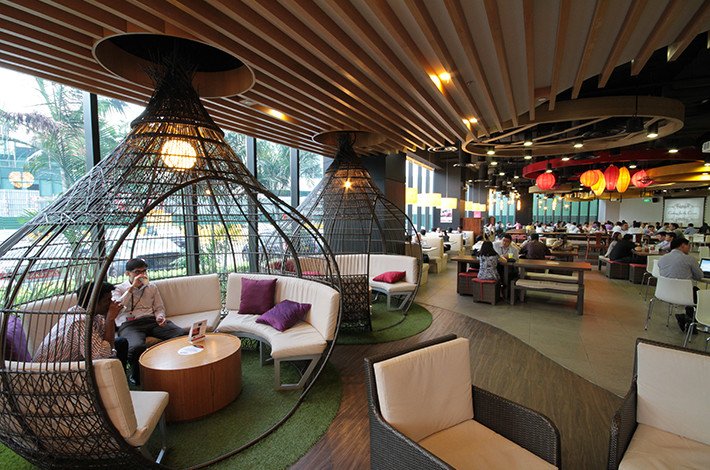
Five Recruiting Strategies You Can Use to Attract Talent to Your Organization
Rapid technological change – from Internet-enabled apps to the smartphones we hold in our hands – has transformed the business landscape. Companies such as Amazon, Apple, and Uber have seized on these opportunities, while others, such as Toys “R” Us and Sears, have fallen by the wayside. But how should companies proceed to be successful in the next wave of change? In other words, given that new technologies based on artificial intelligence and machine learning are poised to transform the business landscape even further, what should companies be doing today to ensure that they have the right workforce moving into the future?
1. Understand Your Own Business Needs and Values First
“The future ain’t what it used to be.”
— Yogi Berra
The traditional HR approach of carefully matching an applicant’s skillset with today’s job requirements won’t solve these problems in the long run. Instead, the answer lies in understanding your core values as an organization.
What is your long-term strategy, and, from there, what steps can you take today to build up a team that will take you where you need to be?
Take note of that word team. According to Peter Cappelli at the Wharton School and Anna Tavis at New York University, teams are becoming a key part of the talent solution. In the past, “traditional HR focused on individuals—their goals, their performance, their needs. But now that so many companies are organizing their work project by project, their management and talent systems are becoming more team focused. Groups are creating, executing, and revising their goals and tasks with scrums—at the team level, in the moment, to adapt quickly to new information as it comes in… They are also taking it upon themselves to track their own progress, identify obstacles, assess their leadership, and generate insights about how to improve performance.”
2. Always Be Recruiting, From the Inside Out
Patty McCord, the Chief Talent Officer at Netflix during their first decade of rapid growth, believes that hiring functions shouldn’t be limited to the HR department alone; instead, everyone working at a company should be involved to some degree in the recruiting process, because you never know where or when a connection will lead to an important talent acquisition. “At Netflix, we had a saying: ‘Always be recruiting!’ Candidates came from everywhere—from professional conferences, from the sidelines of a kids’ soccer game, from conversations on airplanes.”
McCord also took the unusual step of building an in-house team of experienced recruiters. This not only paid for itself over time by eliminating agency fees, it also allowed the recruiters to spend more time coaching hiring managers on best interview practices. In exchange, recruiters learned more about the company’s critical business functions, making them better equipped to identify suitable candidates.
Finally, according to McCord, the interview process should revolve around the candidate, not the other way around, “Candidates are evaluating you, just as you’re evaluating them. People forget that. Our goal was to have every person who came for an interview walk away wanting the job.” Hiring decisions were made quickly. “Speed and efficiency often meant we could land candidates who were interviewing with other great companies.”
3. Get the Most Benefit from Hiring Specialized Consultants
Given the low unemployment rate and the shortage of highly-skilled workers, many companies are finding it difficult to attract full-time employees in the fields where they are needed most. According to a report in Barron’s, “The Great Labor Crunch,” the problem will only get worse in the future as baby boomers continue to retire.
The hard reality is that many companies — 40% according to a McKinsey Global Institute study — can’t fill their open positions, particularly in analytical, engineering, and management roles.
Why is this happening? Many of today’s highly sought after candidates have many options open to them, from working for high-paying companies with billion dollar stock valuations to lucrative consulting opportunities. As a result, many companies are turning to what Forrester Research euphemistically calls an “on-demand” workforce. In a 2017 report, Forrester says that more than one in three firms use external consultant workers and that they are generally satisfied.
But John Boudreau, Professor at USC’s Marshall School of Business, Mara Swan and Amy Doyle of ManpowerGroup, caution that companies may need to reorganize their HR departments (traditionally in charge of full time hires) and Procurement operations (often responsible for contract hires) to create an integrated talent strategy. If things are not coordinated, unexpected, suboptimal situations can arise, such as what happened at a fast-growing biopharmaceutical company, where “the organization initially believed its workforce was 90% employees and 10% contract workers, but the data revealed an actual mix of 73% and 27%.” How did this happen? The company was not aware of ‘hidden’ workers coming from ad hoc short-term contracts, temporary worker agencies, freelance platforms, etc.
4. Create Your Own Internal Business Accelerator
Many traditional companies seeking to attract high-tech talent are pursuing an unorthodox approach — they are creating their own internal business accelerator programs that exist within a new division or a separate but affiliated company.
Examples of companies pursuing this strategy include:
- Bayer
- Boston Consulting Group
- Capital One Labs
- Ford Smart Mobility
- Walmart Labs
According to Michael Mankins, Partner at Bain & Company, “Accelerators tend to have different cultures than their parent companies — they have different language and jargon, management techniques, tools, and office spaces. And they can create a lot of value by generating new business.” He explains that “at Ford Motor Company, building world-class software engineering capabilities has become a strategic imperative. Car manufacturers are facing new competitive threats from the likes of Google, Uber, Tesla, and dozens of start-ups. And a new ecosystem of finance, insurance, energy, infotainment, and maintenance services has emerged based on the data-driven, app economy. In response, Ford established an entirely new business unit — Ford Smart Mobility — where most of the company’s software engineers reside.”
Formaspace Office Helps Drive Fintech Innovation at Capital One Labs
We can attest to the innovation that comes out of these business accelerators. One of our financial technology (or “fintech”) clients is Capitol One Labs, where leading software developers are creating the consumer finance products of tomorrow.
Capital One Labs wanted an engaging environment within their office — one that encouraged cross-departmental collaboration. Working with One Workplace, the Formaspace Office dealer, we were able to create a unique set of height-adjustable (sit-to-stand) desks. Today, several hundred of Capital One Labs’ employees work at Formaspace Office Weldmarx I desks, which are kitted out with natural finish hardwood ash worksurfaces built on top of strong, steel legs that give the office its unique industrial-chic look. Built-in USB ports make it easy to charge mobile devices, and the large casters enable workers to move the desks easily — from area to area — to collaborate on different team projects.
Team members at Capitol One Labs are very satisfied — an internal survey gave grade A marks for the “great atmosphere, great communication, and a good working environment” experience at the office.
5. Work Directly with Educational Institutions to Attract New Graduates
Another strategy whose time has come again is establishing greater links with local educational institutions.
Some companies, such as AT&T, have a long track record in providing financial support in education. For example, they recently provided $1 million to fund an online Master’s program and analytics at Georgia Tech. In the long run, AT&T benefits from hiring graduates with the skill sets they need.
In a similar approach, Google offers funding, volunteer hours, and other resources to the Khan Academy, which provides online courses. Not only do Google employees themselves often take advantage of these classes, but Google can also monetize the ad revenue from the videos as well as promote themselves as an attractive employer to a wide audience.
There are also more unconventional approaches to connecting with education partners and their students.
At the global financial institution Citadel, L.J. Brock (Chief People Officer) and Justin Pinchback (Head of Talent Strategy and Solutions) took inspiration from the way that Navy Seals, NASA, and the NFL use group tryouts to evaluate and recruit candidates.
Citadel was looking for candidates that had an innate ability to analyze data — even if they were not looking for a job in finance. To attract a wide audience of participants, Brock and Pinchback created a series of twenty ‘datathons’ at different universities across the US, Canada, and Ireland. To sweeten the pot, winners would share a $25,000 prize, with an opportunity to compete for $100,000 in the final round of competition.
According to Brock and Pinchback, “Firms seeking elite talent must realize that all the typical interviewing and recruiting processes are ripe for improvement. The right people don’t always come knocking on your door. We can learn from elite organizations that are filled with superstars. Attract them, ask them to audition, hire the people who thrive under that pressure, and build your own powerhouse team.”
Five More Ways Office Design Can Help You Attract and Retain Talent in Your Office
Did you know that your office design can have a profound effect on how candidates perceive your company?
Let’s look at five more ways you can attract and retain talent in your office:
1. First Impressions Make a Big Difference
When trying to recruit new employees, the appearance of your office can make all the difference.
Our surveys indicate that Millennials are especially interested in office aesthetics when making a decision where to work. This generation also is averse to working in closed off cubicles, instead, preferring to work in open office environments that remind them of college campus environments.
Collaborative project work is also a byword for Millennial workers. Savvy employers are taking the hint and introducing more communal work areas for project teams to gather on a regular basis or to collaborate spontaneously.
For example, consider offering Wi-Fi-equipped outdoor spaces that allow employees to get some fresh air as they work. Cafeterias and communal eating areas are another highly valued amenity that allow workers to gather, socialize, and share ideas with one another.
Finally, incorporate biophilic design elements, such as large indoor trees or living plant walls, that bring the outdoors to the inside working areas. These not only improve indoor air quality, but they also absorb sound and help workers feel less stressed.
2. Live Your Brand at the Office
What is the one characteristic shared among all of today’s leading companies?
The answer: each of them, from Airbus to Boeing, from Toyota to Ford, has established a powerful brand that inspires loyalty among their employees and customers alike.
Why wouldn’t it be any different at your office? In other words, your work environment is incredibly important for setting the tone for your employees, your customers, financial analysts who come to visit, and so forth.
That’s why many leading companies come to Formaspace, because we can build unique, customized furniture solutions that support your company’s unique vision and market presence.

We can work directly with your architects and designers to create bespoke designs, then manufacture them in quantity at our factory headquarters here in Austin, Texas. Talk to one of our friendly Formaspace Office Design Consultants today to learn more.
3. Employees Who Work and Play Together, Stay Together
Another useful insight from our survey of Millennial workers is their desire to both work and play at the office.
Employers have taken notice.
Many are now creating multipurpose game rooms in the office that can double up as conference rooms. In fact, at NeoCon 2018 in Chicago, Formaspace Office introduced the perfect product for this scenario: a ping-pong table that can convert back to a conference table in a matter of seconds, or split apart to make to separate, movable tables.
Encouraging physical activity at the office is an important part of promoting wellness within the office. To reduce back pain and increase circulation during the day, many companies are specifying Formaspace Office sit-to-stand desks. Their clever, unique design moves the entire worksurface, including storage units, up and down at the touch of a button, allowing your workers to change position throughout the day.
4. Keep it Quiet
While open office designs offer unparalleled flexibility and freedom for workers to move about during the day, unwanted noise can be a problem.
Fortunately, there are many ways to keep distracting ambient noise levels in the office under control.
Take a look at our report on how to improve the acoustics within your workplace. It includes tips for optimizing your floor plan to reduce unwanted noise to how to use acoustical ceiling elements, wallcoverings, and floor design details to minimize ambient noise.
Many jobs require serious concentration. Don’t overlook the needs of those who work best in quiet spaces.
Talk with your Formaspace Office design consultant about unique furniture solutions, including huddle rooms, reservable conference rooms, and study/library areas where your employees can concentrate on their work without the day-to-day distractions of office noise.
5. Encourage and Measure Employee Engagement
Our final tip for attracting and retaining talent is to encourage workplace engagement that keeps your employees involved.
How can you get started?
According to Adam Grant, Professor at Wharton School of Business, and Scott Judd and Eric O’Rourke at Facebook, empirical evidence points to the considerable value of conducting regular internal employee surveys.
Employee survey results can:
- Help predict employee behavior (and serve as an early warning of any issues).
- Give employees an important opportunity to feel that their concerns are being heard.
- Provide valuable insight into employee attitudes so the company can make effective responses.
- Serve as a subtle nudge to influence employee attitudes and behavior.
Here at Formaspace Office, we not only regularly conduct surveys (such as the Work Life Awareness Survey we mentioned earlier), we have also established a company “culture committee” that has an employee representative from each department so that everyone has a voice. This group meets twice a month to find ways to celebrate employee achievements and to uncover new ideas for making Formaspace Office a more inviting place to work.
Formaspace Office Makes Your Workplace a Place Where People Want to Work and Play
If you can imagine it, we can build it, right here in our Austin, Texas factory headquarters.
Formaspace Office not only makes unique, authentic, differentiated furniture for your office environment, we are also a great place to work. Talk to us and find out more.
Find out why companies such as Google, Twitter, Capitol One, and more choose Formaspace Office products for their signature office designs.
Your Formaspace Office Design Consultant is just a phone call away.



